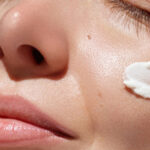
by Tasha Fields
In the not-so-distant past, clients seeking age management often faced a choice: commit to the precision and results of high-tech clinical treatments or embrace the gentler, sensory-focused world of traditional holistic care. These two approaches were often seen as separate realms — one rooted in science and devices, the other in nature and ritual. Today, however, the most forward-thinking estheticians are bridging this divide, creating treatment protocols that are as innovative as they are nurturing. The result is a new era in age management: one where cutting-edge technology meets time-honored tradition to deliver both visible results and a profound sense of well-being.
This integration is not just a trend; it reflects a deeper understanding of what clients truly want. While they expect measurable improvements in firmness, tone, and texture, they also crave an experience that feels restorative and deeply human. High-tech tools excel at stimulating structural change within the skin, while traditional methods support circulation, lymphatic flow, and nervous system balance — all essential for long-term skin vitality. When combined, these modalities create results that look natural, last longer, and leave clients feeling renewed from the inside out.
The High-Tech Side: Science-Driven Skin Transformation
Modern esthetic technology has revolutionized the way we address aging. Instead of relying solely on surface-level changes, these devices work at the dermal and even cellular level to stimulate repair and regeneration. For estheticians, the challenge — and the opportunity — lies in understanding how to harness these tools for optimal outcomes while ensuring the treatment experience remains client-focused and comfortable.
Exosome & Stem Cell Therapy
Exosomes, tiny extracellular vesicles derived from stem cells, are at the forefront of regenerative skincare. These bio-signals carry proteins, lipids, and genetic material that communicate directly with the skin’s cells, encouraging them to behave like younger, healthier versions of themselves. When applied after treatments like microneedling or laser resurfacing, exosomes can dramatically enhance healing, reduce downtime, and boost collagen and elastin production. For clients seeking next-level rejuvenation, this technology offers the potential to not only repair visible signs of aging but also improve overall skin function.
Laser Resurfacing
Fractional laser technology has long been a gold standard for improving skin texture, reducing pigmentation, and stimulating collagen. By creating controlled micro-injuries in the skin, lasers trigger the body’s natural repair processes, resulting in smoother, firmer skin over time. The precision of modern fractional systems allows estheticians to target specific depths and concerns, making treatments highly customizable. For age management, lasers are particularly effective in addressing sun damage, fine lines, and overall skin laxity.
Radiofrequency Microneedling
This hybrid modality combines the collagen-inducing benefits of microneedling with the tightening effects of radiofrequency energy. As the insulated needles penetrate the dermis, they deliver controlled heat, which contracts existing collagen and stimulates new fiber production. The result is a double impact: mechanical stimulation from the needles and thermal stimulation from the RF energy. This treatment is especially valuable for clients experiencing early to moderate sagging, as it can improve skin density and lift without significant downtime.
The Traditional Side: Rituals That Nourish and Restore
While technology can reshape and strengthen the skin’s architecture, traditional methods work in harmony with the body’s natural rhythms to enhance circulation, support lymphatic flow, and calm the mind. These techniques often engage multiple senses, turning a clinical appointment into a whole-body experience.
Herbal Compresses
Used for centuries in various healing traditions, warm herbal compresses are both therapeutic and deeply soothing. Infused with botanicals such as chamomile, lavender, and calendula, they deliver plant-based antioxidants and anti-inflammatory compounds while gently warming the skin. This warmth softens tissue, relaxes facial muscles, and primes the skin for deeper absorption of active ingredients. In an age management treatment, herbal compresses can be used at the beginning to relax the client or at the end to calm the skin after device work.
Facial Cupping
This gentle adaptation of body cupping uses small suction cups to lift the skin and underlying tissues. The movement increases microcirculation, bringing fresh oxygen and nutrients to the skin while helping to clear metabolic waste via the lymphatic system. Facial cupping also works to release fascial restrictions that can contribute to the appearance of fine lines and sagging. When performed skillfully, it is both invigorating and relaxing, making it a perfect complement to more intensive treatments.
Ayurvedic Face Oils
Rooted in the ancient Indian science of Ayurveda, these oils are formulated with a blend of plant-based ingredients chosen for their balancing effects on skin and mind. Oils such as rosehip, sandalwood, and ashwagandha seed not only nourish the skin with essential fatty acids and antioxidants but also engage the senses through their natural aromas. Massaging these oils into the skin can stimulate marma points — energy centers in the face — to promote both physical and energetic harmony.
Why the Blend Works
The magic of combining technology with tradition lies in the fact that they address different yet interconnected aspects of aging. High-tech treatments work directly on the skin’s structure, stimulating fibroblasts, encouraging collagen remodeling, and improving the extracellular matrix. These changes are measurable and visible, especially over the long term. Traditional methods, meanwhile, enhance circulation, lymphatic drainage, and tissue flexibility, while also reducing stress hormones that can impair skin repair.
From a physiological standpoint, combining these approaches creates a more supportive environment for regeneration. For example, following an RF microneedling session with lymphatic drainage can help reduce post-treatment swelling, speed recovery, and optimize results. Likewise, preparing the skin with an herbal compress before laser resurfacing can enhance relaxation, making the treatment feel less intimidating and more nurturing.
From a client experience perspective, the blend transforms an appointment from a purely corrective procedure into a holistic ritual. Clients leave not only with skin that looks firmer and more luminous but also with a deep sense of being cared for — a feeling that encourages loyalty and repeat visits. This approach also opens opportunities for estheticians to upsell treatment add-ons, retail homecare, and ongoing packages that maintain results.
The Esthetician’s Role in the New Era
Successfully blending technology and tradition requires both technical expertise and intuitive client care. Estheticians must be well-versed in the science behind each device they use, understanding not only how it works but also how it interacts with skin physiology. Equally important is mastering the art of touch, recognizing that even a technologically advanced treatment can be softened and elevated by sensory details: the warmth of a compress, the rhythm of a massage, the aroma of therapeutic oils.
Consultation is key. By listening to a client’s goals, concerns, and preferences, estheticians can design protocols that meet their needs both physically and emotionally. For some, the emphasis may be on rapid, visible change through devices. For others, the focus may be on creating a restorative, balancing experience. Most clients, however, will benefit from — and appreciate — a thoughtful blend of the two.












